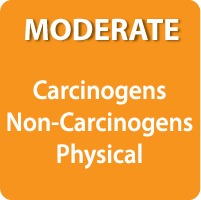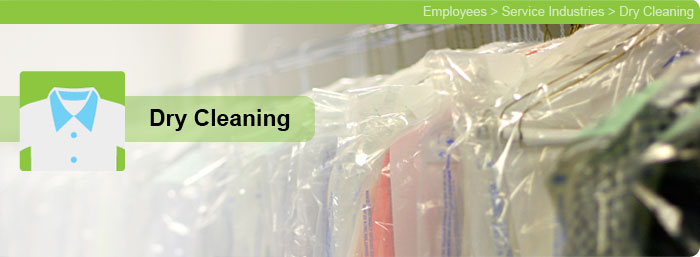Exposure to hazardous chemicals is a daily risk for employees in the dry cleaning industry. Exposure can occur through:
- Skin or eye contact during normal use or accidental spills or splashes.
- Breathing vapors in buildings where the chemicals and solvents are used.
Perchloroethylene (PERC, aka tetrachloroethene) is the most commonly used dry cleaning solvent. PERC, along with other chemicals
and solvents used in dry cleaning operations, have been associated with cancer and other health effects.
Hazards in Dry Cleaners
- CANCER:
- Exposure to cleaning agents and other chemicals in dry cleaners can increase employees risk of cancer.
- Perchloroethylene (PERC), a common dry cleaning solvent, is considered a probable human carcinogen.
- RESPIRATORY PROBLEMS:
- Exposure to vapors and chemicals used in dry cleaning can cause short and long-term breathing problems.
- Exposure to high concentrations of perc can lead to respiratory failure.
- PHYSICAL INJURY:
- Working with machines and equipment increase your risk of physical injuries on the job.
- Skin contact with perc and other chemicals can results in skin irritation and dermatitis.
Preventing Exposure and Lowering Your Risk
- EDUCATION:
- Review the MSDS Sheets for the chemicals you work with.
- Know the proper procedures for the equipment you use and Follow Them!
- AWARENESS:
- Inspect your work area and equipment regularly
- Make sure ventilation equipment is on and working properly.
- Report any problems with chemicals or equipment, such as spills or breakdowns, immediately.
- PROTECTION:
- Wear the proper personal protective equipment (PPE) for each activity.
- Don't do anything or go anywhere you feel is unsafe.
If you don't see your job on these pages, or have additional questions,
call the Delaware Helpline at 1-800-464-HELP or
complete this online form.

-
Back to Healthy Workplaces - Service Industries.
|

|
Chemicals in
Dry Cleaners
2-Butoxyethanol
Chlorobenzene
Pentachloroethane
Petroleum distillates
Stoddard Solvent
__________
Perchloroethylene (Perc, PCE)
__________
1,1,2-Trichloro-1,2,2-trifluoroethane
__________
1,1,1-Trichloroethane
__________
Trichloroethene (TCE)
|

